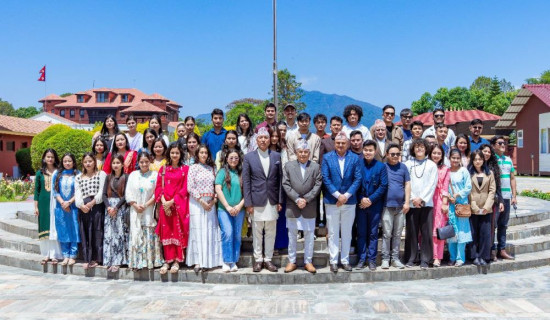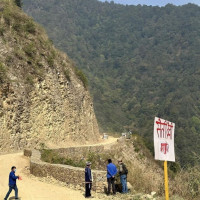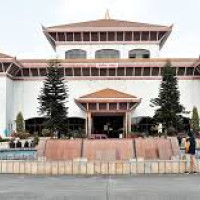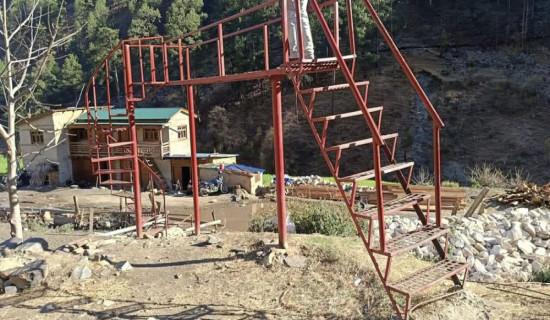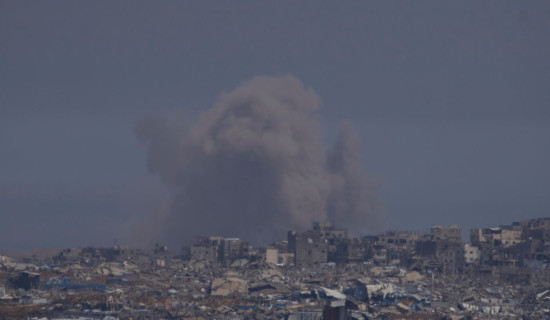- Thursday, 8 May 2025
Sheep herds return to Himalayan pastures as heat rises in lower hills
By Our Correspondents,Gaighat/Bajura May 8: Sheep herds that were brought down from the Himalayan region to the mountains for grazing are now being taken to the Himalayan region in Udaypur of Koshi and Bajura of Sudurpashcim provinces.
In the Udayapur district, located in the inner Madhes and Mahabharat ranges of eastern Nepal, sheep herds that were brought down to evade the increasing cold with the onset of winter have returned to the Himalayan region with the increase in heat in the lower hills.
Sheep herds brought from Okhaldhunga and Solukhumbu districts to Udaypur are now returning to their places with rising temperatures in plains and lower hills.
Before the onset of winter, sheep herds from Solukhumbu and Okhaldhunga districts are taken to Udayapur, but after the increase in heat, sheep herders said that the sheep herds had been taken to the Himalayas from this month.
Durga Bahadur Gurung of Siddhicharan Municipality-5, Rumjatar in Okhaldhunga, who has about 700 sheep, said that as it is very cold in the Himalayan region during the winter season, they bring sheep down to the hilly region of Udayapur in mid-November every year. “Now when it is hot here in Udayapur, we have now started moving uphill after the increasing heat in the Tarai.”
He said that the heat has increased in the grazing area of Udayapur and the sheep have started to become tired in the grazing area, so they moved uphill towards the mountain.
He said that sheep sheds are kept in the community forest area by paying a certain amount of revenue.
Another shepherd, Saroj Gurung, said that there are many sheep sheds in Udayapur district, including Tawashree, Sirise, Limpatar, Okhle, Nametar, Aanpatar, Lekhani, Hardeni, and Rautkharka.
As the hilly areas of the Mahabharata range in Udayapur have enough grass for sheep grazing, more than a dozen sheep sheds descend from the Himalayan region every year during the winter season.
Shepherd Chandra Bahadur Gurung said that a large number of lambs born in winter are sold in Udayapur and the remaining ones are taken to Rumjatar in Okhaldhunga for sale.
He said that the community forest officials in Udayapur are taking high charges for keeping the sheep herds, and that it is becoming difficult to graze sheep because one community forest is charging up to Rs. 10,000.
There is also a trend of keeping sheep in the fields of the people who provide food and shelter to sheep herders, and in doing so, some farmers in the hilly areas are even requesting villagers to keep pasture in their fields, as the sheep manure enriches the crops in their fields.
The sheep feed on the thick bushes of black banmara, amliso and other species of plants that are abundant in the high hills, so they graze in the forest during the day and are taken to the pasture at night if the villagers do not demand them.
Meanwhile, the sheep herds that had migrated from the Himalayan region of Bajura to graze during the winter season have returned to the lake again this time.
The sheep herds from Himali, Jagannath, Swamikartik Budhinanda Municipality in the eastern and northern regions of the district had migrated to the valley in mid-November, 2024.
As the heat began peaking in the valley from mid-April, the herds of cattle have returned to the lake from there.
Before the onset of the winter season, the sheep herds from Himali, Jagannath, Swamikartik, Budhinanda Municipality and other places in the lower region, Budhiganga, Khaptad, Chhededah, Triveni and neighbouring districts of Achham, come to various places.
In the meantime, Bal Bahadur Bhandari, a local of Himali Rural Municipality-6, said that the herds have been moving towards the lake since mid-April.
He said, “It is customary to bring sheep herds here to the valley in the winter and back to the lake in the summer. We take sheep herds here to the lake in the summer and back to the valley in the winter.”



